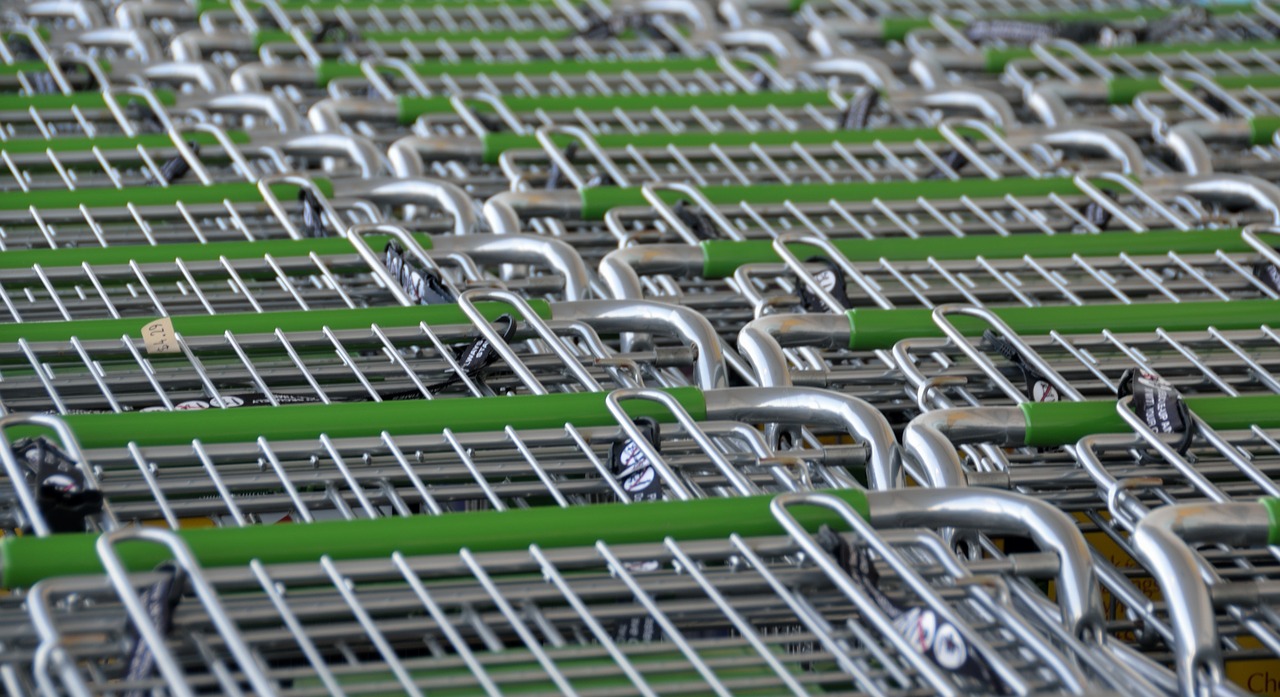It’s expected that by 2022, 20% of all grocery sales will come from online shoppers. And with 70% of consumers purchasing some of their groceries on the web, I’m definitely in the minority, having never ordered groceries online myself.
I’m not opposed to online shopping or curbside delivery. They’re great options for those with kids, those who have lost their patience dealing with always-full parking lots, or those without access to reliable transportation. We could all benefit from wider aisles and shorter checkout lines. Time is an important resource, and most of us feel like we don’t have enough of it.
Call me a traditionalist, but I like going to the grocery store. It makes more sense for me, whether I’m grabbing a few things or doing a week’s worth of pantry stocking. With brick-and-mortar, I can also avoid navigating the world of memberships and high delivery costs. While I make my shopping list in advance, the endless products I see as I browse the aisles can serve as meal inspiration. The unmissable “sale” stickers help, too. Also, like many others who shy away from online delivery, I like to pick out my own produce. Fifty-nine percent of complaints against online grocery services revolve around receiving undesirable or mishandled produce.
The art of the grocery store
While many grocery stores still have room for improvement, a massive amount of psychology and planning goes into getting consumers to spend more, from the store’s scent to the sugary cereals. Everything’s been thought out and tested by science, like the fact that supermarkets make it hard to find a clock or a window, so you lose track of time and keep shopping. We’re still debating what is the ideal soundtrack for grocery shopping, and if there’s an ideal genre we can all agree on.
Did you know that spraying water on produce serves only to make it look fresher? The most expensive items are at eye-level, and products geared toward children are placed lower. Dairy products are kept as far from the entrance as possible, so shoppers have to pass by more items on their way to essentials. Supermarkets have been so strategically planned to keep shoppers within their doors and spending more that it’s almost a shame not to be the subject of their mind games.
A changing industry
For those who haven’t stepped foot in a grocery store lately, it might be time for a visit. With the use of a mobile phone, it’s easier for shoppers to look up where items are, or receive promotional items as they walk down a specific aisle. In addition to location-based benefits, mobile devices have also helped with checkout, which has served as a major pain point for decades. A 2015 study found that 88% of consumers want retail checkout to be faster, and with self-scanning technology, it’s now becoming common to avoid the checkout process altogether. Hopefully, hands-free shopping carts will be the next mainstream innovation. Clunky carts with one rusty wheel are so 20th century.
I’m fiercely loyal to shopping at my grocery store (America’s third favorite), and it helps that they’re starting to address the pain points that made consumers turn to online shopping in the first place. But more than just addressing current issues, brick-and-mortar grocery stores should also offer their own unique in-store benefits, to ensure shoppers like me are visiting. It all goes back to how we all want our time to be spent efficiently, and grocery retailers should strive to ensure that brick-and-mortar shopping is worth it.

